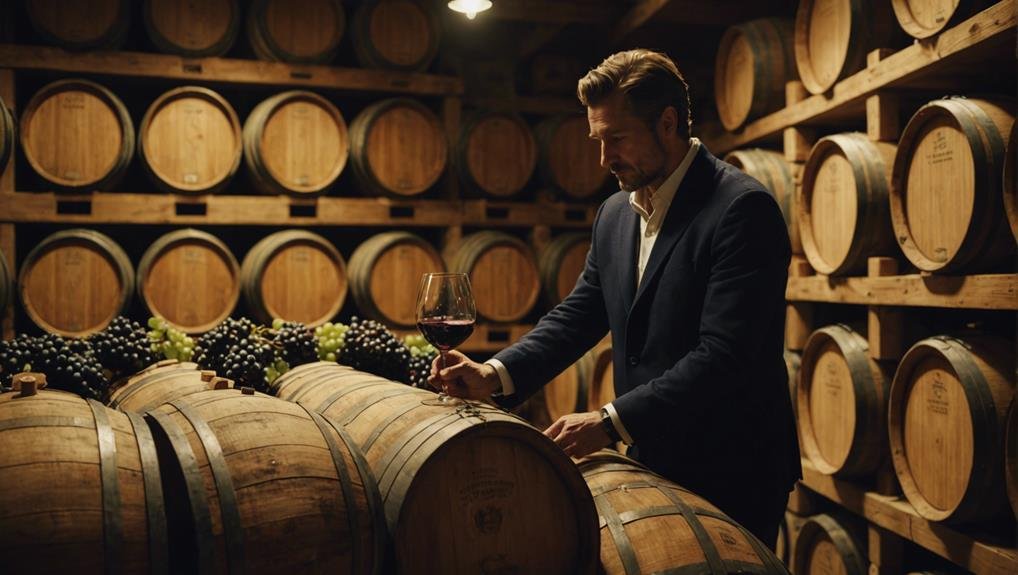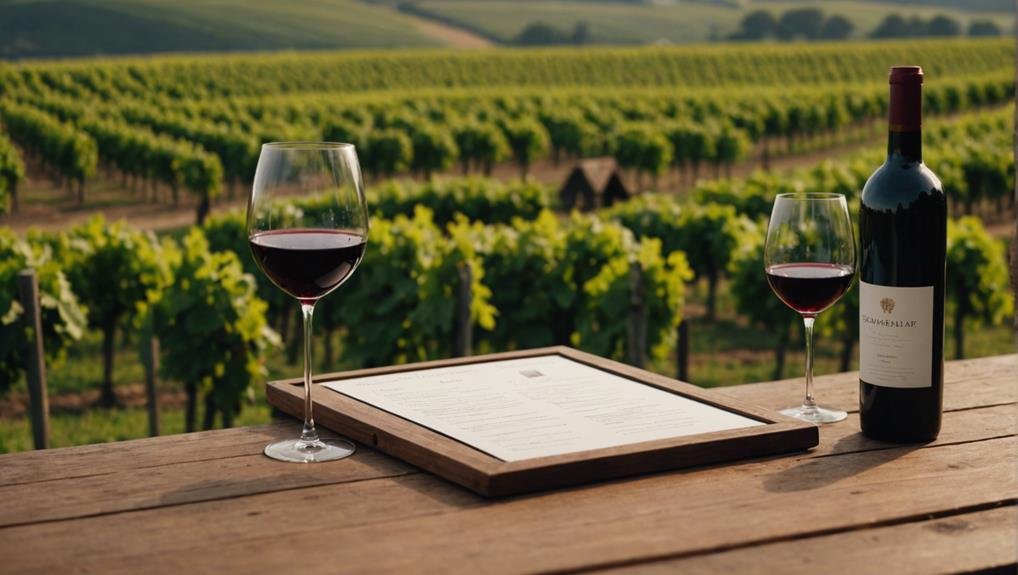'Somm Film' opens up the world of wine by showcasing winemaking techniques and the role of terroir. For instance, the limestone soil in Champagne gives its sparkling wines a distinct minerality. The film also features winemakers like Steve Matthiasson, who preserve ancient traditions in their craft.
The movie highlights the high costs and craftsmanship behind top-quality wines. It emphasizes practices like hand-harvesting and careful fermentation. Additionally, it discusses how oak barrels influence the flavor of wine, with these choices often reflecting family legacies.
Wine rating systems, such as Robert Parker's 100-point scale, are explored in the film. These systems are influential but also have their limitations. Overall, the film offers a deep dive into the fascinating and complex world of wine.
Exploring Winemaking Insights
Let's dive into the fascinating world of winemaking as showcased in 'Somm: Into The Bottle.' This film takes a close look at the complex process of turning grapes into wine. It highlights various winemaking techniques and their historical roots, showing how they've evolved over time due to cultural influences and technological advancements.
One key aspect the film explores is the impact of terroir, which includes soil, climate, and geography. These factors create unique conditions for growing different types of grapes. For example, the limestone-rich soil in France's Champagne region gives its sparkling wines a distinct minerality. Understanding how terroir affects grape growth helps us appreciate the diverse flavors and characteristics of wine.
The documentary emphasizes that understanding the relationship between terroir and grape varieties is crucial for truly appreciating wine. Through this analysis, we gain a deeper respect for the art and science involved in winemaking.
Stories Behind the Wines
The film 'Somm: Into The Bottle' brings to life the fascinating stories behind each bottle of wine. It explores the meticulous work of winemakers like Steve Matthiasson and the historical legacies of estates like Schloss Vollrads. By diving deep into the perspectives of winemakers, the film helps us understand the passion and dedication that drive their craft.
For instance, it showcases how historic estates preserve centuries-old traditions in winemaking. It also explains the impact of historical events, like how vineyards in Alsace survived wars and continued producing wine. The influence of pioneers like Robert Mondavi is highlighted, showing how New World wines have grown and evolved.
These stories make us appreciate every sip of wine even more. For example, a bottle from Alsace carries not just flavors but history, while a wine from a New World vineyard reflects innovation and change.
This film enriches our understanding and enjoyment of wine by showing us the dedication and history behind each bottle.
The Cost and Craftsmanship

Diving deeper into the world of winemaking, we examine the costs and craftsmanship involved. Producing high-quality wines isn't just about the grapes; it's about the meticulous processes at every stage.
From hand-harvesting to carefully monitoring fermentation, each step requires skill and attention to detail.
When you visit estates like Domaine Romanée-Conti, you see firsthand how they prioritize quality over mass production. Winemaker Aubert de Villaine highlights this balance, showing that exceptional quality has its price.
Our cost breakdown reveals that the labor-intensive and traditional methods elevate these wines. This craftsmanship justifies their price, making each bottle a true work of art.
Importance of Oak Barrels
Oak barrels are vital in shaping the flavor and character of wine. The choice of oak, whether French or American, heavily influences the wine's taste, adding flavors like vanilla, spice, and toast.
Winemakers carefully plan their oak program, often reflecting their family's history and dedication to winemaking. For example, when Elio Altare switched to French oak barrels, it transformed Barolo wines and set a new standard.
Understanding the impact of barrels helps us appreciate the craftsmanship behind each bottle. Each sip tells the story of generations committed to quality, making oak barrels an essential part of winemaking.
Wine Rating Systems

When it comes to evaluating wine quality, rating systems like the 100-point scale are important. Created by critics like Robert Parker, this system helps simplify our wine choices.
However, there are often disagreements about the fairness and accuracy of these ratings. Some people think that personal preferences and biases can affect results, making it hard to trust the numbers alone. Others believe these ratings are helpful, providing useful insights in a crowded market.
For example, if you're new to wine, a high rating for a Cabernet Sauvignon from Napa Valley could guide you to a quality choice. On the other hand, someone might prefer a lower-rated, but more affordable, Malbec from Argentina because it suits their taste.
Ultimately, while wine ratings can be a good starting point, tasting the wine yourself is crucial to form your own opinions.
Conclusion
In 'Somm: Into The Bottle,' winemaking is compared to creating a symphony. Every detail, like picking the right oak barrel and understanding historical influences, adds to the final product. Steve Matthiasson's story shows the dedication and passion needed to make great wine. The film reminds us that each bottle has its own story, making every sip a journey through time and effort.
For example, Matthiasson's work with grape varieties and his careful attention to vineyard conditions result in wines that reflect both the land and his expertise. This film not only highlights the complexity of winemaking but also offers a deeper appreciation for the craft.
When you enjoy a glass of wine, you're experiencing the culmination of countless hours of hard work and tradition.